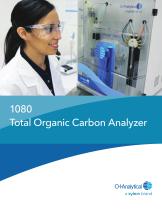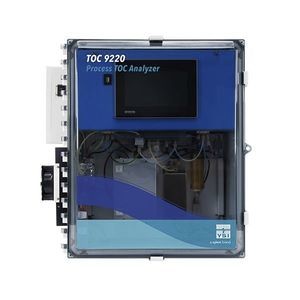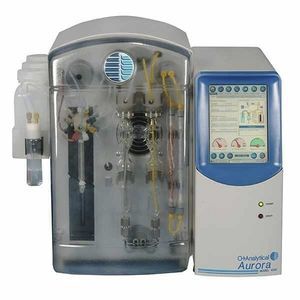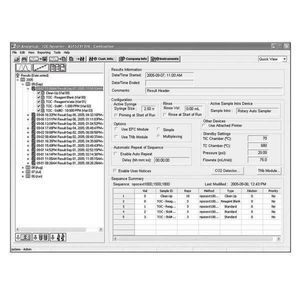
Carbon analyzer 1080carbonatesinorganicmolecular weight

Add to favorites
Compare this product
Characteristics
- Tested parameter
- carbon, carbonates, inorganic, molecular weight, CO2
- Applications
- for water analysis
- Configuration
- benchtop
Description
The 1080 Total Organic Carbon Analyzer uses high-temperature (680 ºC) catalytic combustion to oxidize and convert organic compounds present in aqueous samples to CO2 for measurement by a solid-state, non-dispersive infrared detector (SS-NDIR). Though high-temperature combustion TOC has been shown to be very effective for the analysis of samples that are of high molecular weight or contain substantial amounts of salt or difficult-to oxidize organics (e.g., humic acids), these types of samples are problematic for typical combustion TOC analyzers. Our patented technologies protect the catalyst, increase reliability, reduce maintenance and operating costs, and extend the life of the instrument.
Overview
The 1080 processes aqueous samples for analysis of the total organic carbon total inorganic carbon and non-purgeable organic carbon (NPOC) content. Supporting USEPA-approved methods, Standard Methods, ASTM, DIN/ISO/CEN, and EU Methods our 1080 can analyze up to 300 samples per 24-hour period, depending upon the protocol employed, in excess of 100,000 samples per year. Principal applications include wastewater, seawater, industrial process water, drinking water, groundwater, and cooling water.
The 1080 also employs a multi-step analysis technique to distinguish and quantify different forms of carbon present in sample matrices and determine organic content.
TIC concentration is determined by acidifying a sample to a pH less than 2. Carbonates and bicarbonates in the sample dissociate, forming CO2, which is measured by a solid-state non-dispersive infrared detector (SS-NDIR) and reported in mass and concentration values.
VIDEO
Catalogs
1080 TOC Analyzer
8 Pages
Related Searches
- Analysis software
- Control software
- Laboratory software
- Reporting software
- Laboratory analyzer
- Automated software
- Tracking software
- Control analyzer
- Analyzer for the pharmaceutical industry
- Temperature analyzer
- Flow analyzer
- Environmental analyzer
- Evaluation software
- Continuous analyzer
- Security software
- CO2 analyzer
- Analyzer with touchscreen
- Water analysis analyzer
- Automatic sampler
- Chromatography detector
*Prices are pre-tax. They exclude delivery charges and customs duties and do not include additional charges for installation or activation options. Prices are indicative only and may vary by country, with changes to the cost of raw materials and exchange rates.









